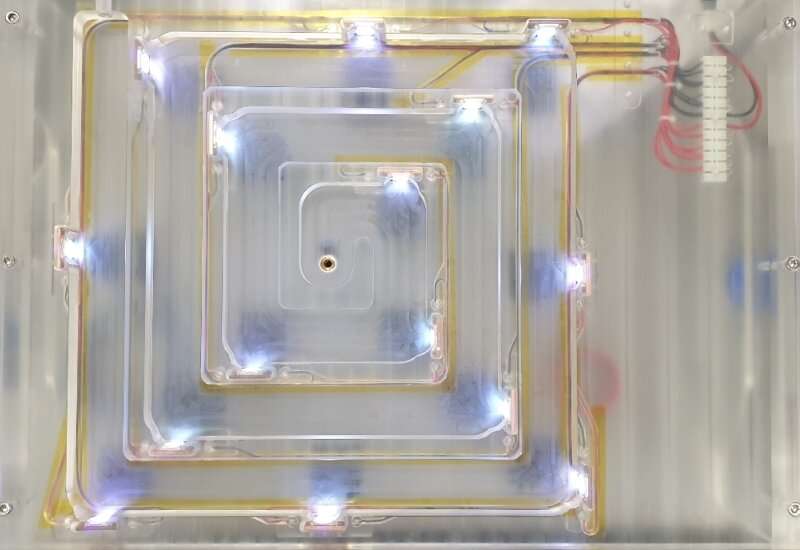
Students from Monash Chemical
Engineering have used the natural water treatment cycle found in nature as
inspiration to develop a sustainable, stand-alone water treatment system that
removes persistent organic pollutants from industrial wastewater.
Developed by Ph.D. students Mostafa Dehghani and Mahdi Naseri and undergraduate student Clare Carew, the unique Stand Alone Sunflow System (SASS) uses easily accessible and affordable materials to provide a stand-alone and sustainable water treatment option that requires less labor and maintenance compared to the traditional systems and will treat persistent organic contaminants of polluted water in small and medium industries.
Industrial wastewater is a global concern. Untreated wastewater from industrial sites can contain heavy metals, toxins and petroleum hydrocarbons which can have direct implications on aquatic ecosystems and subsequently impact food resources and water supply.
Appropriate operational management practices are needed to minimize the risk that industrial waste can have on the environment.
Ph.D. student Mostafa Dehghani says that the main motivation for developing the SASS technology was to curb the global impact of industrial wastewater.
"According to recent figures from the United Nations, by 2030, half of the world, including many in low resource areas, will face water scarcity. This was our main motivation to design a water treatment system inspired by nature, that takes advantage of sunlight, especially in areas with a high light intensity like Australia," Mr Dehghani said.
"The available systems currently in the market are either inefficient or produce a secondary pollutant that needs to be disposed of in the environment. Our prototype seeks to provide a sustainable treatment of persistent organic pollutants such as fluorinated compounds in low resource settings."
The SASS design, which was recently recognized by the James Dyson Foundation, avoids using fossil fuel-based energy sources or chemicals that pose a hazard to human or environmental health. The system also uses a cellulose/zinc oxide catalyst activated by sunlight to break down organic pollutants in water circulated through a treatment tank.
The pilot prototype takes advantage of sunlight and mounted UV lights powered by solar panels are activated when insufficient sunlight is available, while a microcontroller manages the flow of water through the system. At the end of the treatment cycle, clean water is discharged from the system.
"The efficacy of the system was examined using a variety of organic pollutants such as per- and polyfluoroalkyl substances (PFAS), dioxane solvents, industrial dyes, and real wastewater samples until degradation to below health and environmental advised levels were achieved," said Mahdi Naseri.
Currently, there is a lack of sustainable and economical methods to treat persistent organic pollutants, especially for low resource settings. The materials used in this particular system are from abundant and affordable sources, making the SASS a much more affordable alternative.
Through further advancements and research, the SASS technology will soon have the capability to be scaled up to accommodate for the treatment of larger water streams. The students are looking to attract funding investment to improve the SASS and implement purpose-built microcontrollers to manage various sensors and control the flow of contaminated and treated water. Once finalized, the intention is to work with targeted industries such as breweries, textile, food and beverage, and printing companies to apply the SASS technology into their commercialisation processes.

 Previous page
Previous page Back to top
Back to top







